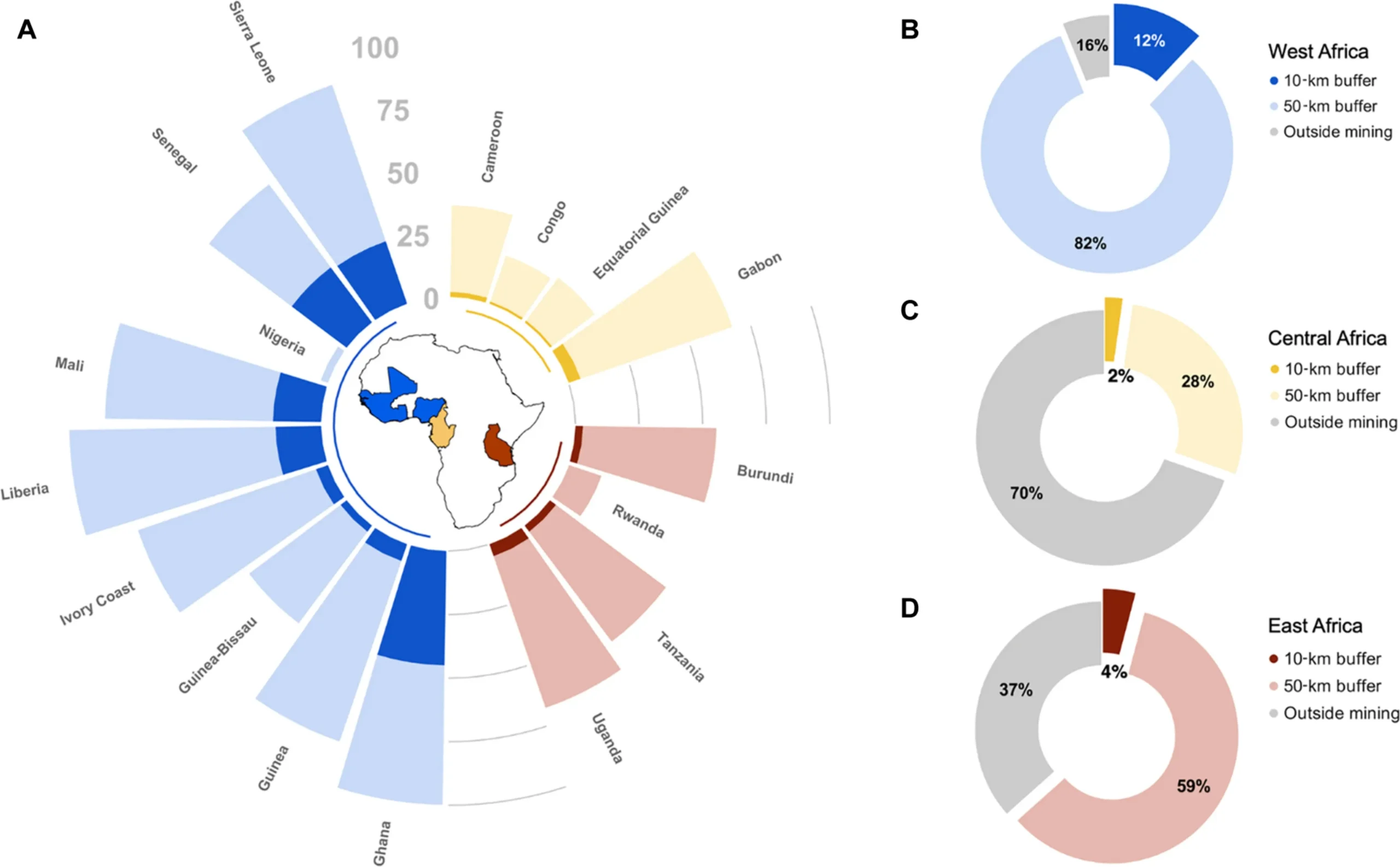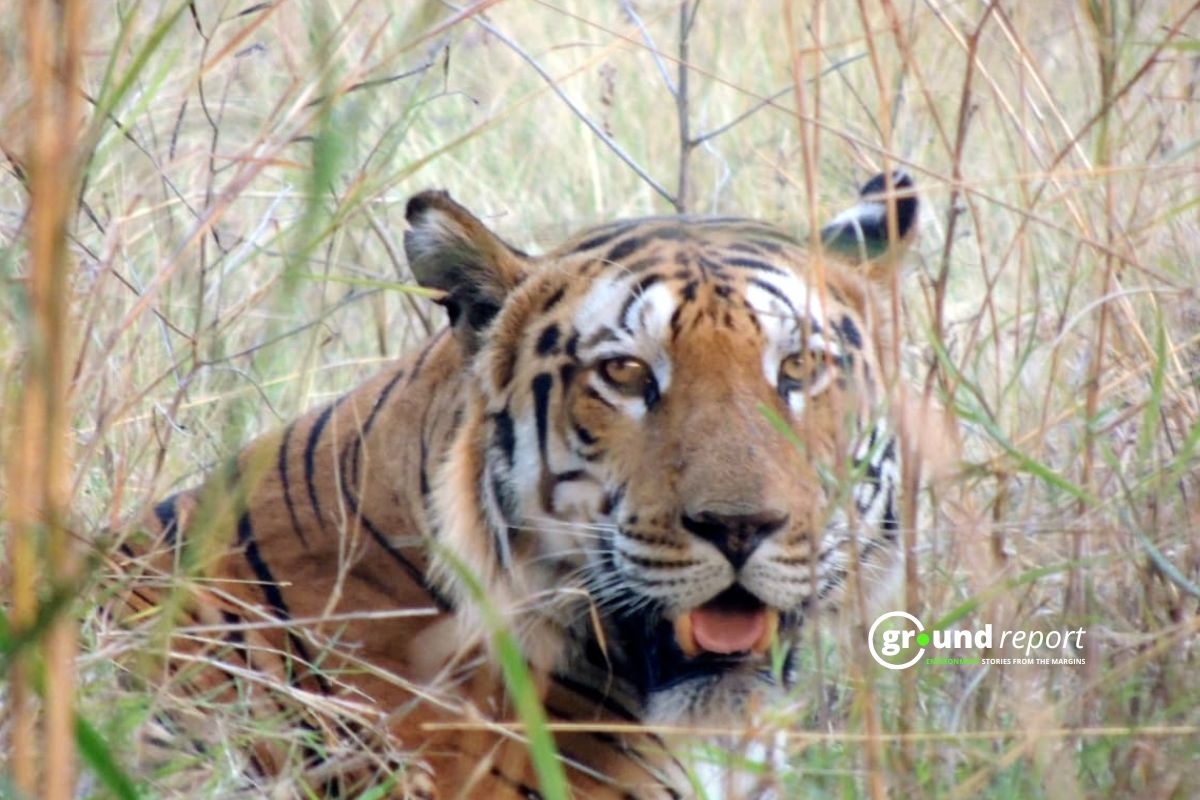A recent study published in the journal Science Advances reveals alarming findings about the potential impact of mining activities on nearly 180,000 of great ape populations in Africa. The study highlights the significant overlap between areas with high densities of great apes and African mining sites for critical minerals essential for clean energy production.
Great apes, including gorillas, bonobos, chimpanzees, and orangutans, are particularly vulnerable to the encroachment of mining activities due to their large size and humanlike features. According to the study, approximately one-third of all remaining apes in Africa are at risk due to the proximity of mining operations to their habitats.
West Africa faces significant ape-mining overlap
The researchers identified West Africa as a region with particularly high potential impacts, with up to 82% of the ape population living near operational and pre-operational mining sites. Countries such as Liberia, Sierra Leone, Mali, and Guinea are among those most affected, with significant overlaps between ape populations and mining areas.
“Our study reveals that up to one-third of Africa’s great ape population faces potential risks from mining activities, indicating an underestimated threat magnitude,” said study author Jessica Junker, a researcher at Re:wild and former researcher at iDiv and MLU, in a statement to Ground Report.
“The highest spatial overlaps between mining projects and critical ape habitats were found in West Africa, with over 80 percent of the western chimpanzee population at risk. Conversely, central Africa showed the largest impact in terms of affected individuals, totaling over 130,000.”

Areas with high risk are marked in red, while those with moderate to lower risk are marked in yellow. Credit: JUNKER ET AL., SCI. ADV. 10, EADL0335 2024
The study highlights the emerging threat posed by the increasing demand for critical minerals necessary for the transition to cleaner energy sources. This demand has led to a mining boom across Africa, resulting in deforestation and habitat destruction in areas crucial for ape survival.
Using data from 17 African countries, the researchers estimated the direct and indirect negative impacts of mining activities on ape populations. They established buffer zones around mining sites to account for habitat destruction and pollution, revealing significant deforestation in areas up to 50 km from mining areas in some countries.
In Guinea, for example, mining activities could potentially impact over 23,000 chimpanzees, representing up to 83% of the country’s ape population. However, the study also highlights inadequate protection measures for sensitive areas with high ape and mining densities.
Mining endangers great apes with habitat loss and pollution
Mining activities pose multifaceted threats to great apes, encompassing habitat destruction, fragmentation, and degradation, along with indirect risks linked to economic opportunities, heightened hunting pressure, and disease transmission risks,” explained Junker. They utilized species density projections from the Ape Populations, Environments and Surveys (A.P.E.S.) database by the IUCN Species Survival Commission, comparing them with mining impact zones.
In countries like Liberia, Sierra Leone, Mali, and Guinea, the impact of mining on ape populations is severe, with a significant proportion found within mining zones. “Currently, studies on other species suggest that mining harms apes through pollution, habitat loss, increased hunting pressure, and disease, but this is an incomplete picture,” Junker stated.

The overlap between mining areas and “Critical Habitats” for biodiversity outside ape populations is around 20 percent, as per the researchers’ findings. However, only a minimal amount of ape survey data is included in mining company records, hindering comprehensive understanding. “Companies operating in these areas should have adequate mitigation and compensation schemes in place to minimize their impact,” emphasized Sop.
Encouraging companies to share ape survey data is crucial for transparency, enabling a comprehensive assessment of mining activities’ effects on apes and their habitats. The risks to apes extend beyond immediate mining areas, often leading to inaccuracies in compensation measures. “Mining companies need to prioritize avoiding impacts on great apes and use offsetting as a last resort,” urged Campbell.
While minerals like cobalt, lithium, and copper are vital for clean energy applications, mining practices in Africa risk destroying habitats crucial for biodiversity conservation. “A shift away from fossil fuels is good for the climate but must be done in a way that does not jeopardize biodiversity,” emphasized Junker. “Companies, lenders, and nations need to recognize the greater value of leaving some regions untouched to mitigate climate change and prevent future epidemics.”
Keep Reading
Part 1: Cloudburst in Ganderbal’s Padabal village & unfulfilled promises
India braces for intense 2024 monsoon amid recent deadly weather trends
Support us to keep independent environmental journalism alive in India.
Follow Ground Report on X, Instagram and Facebook for environmental and underreported stories from the margins. Give us feedback on our email id greport2018@gmail.com.
Don’t forget to Subscribe to our weekly newsletter, Join our community on WhatsApp, and Follow our YouTube Channel for video stories.










